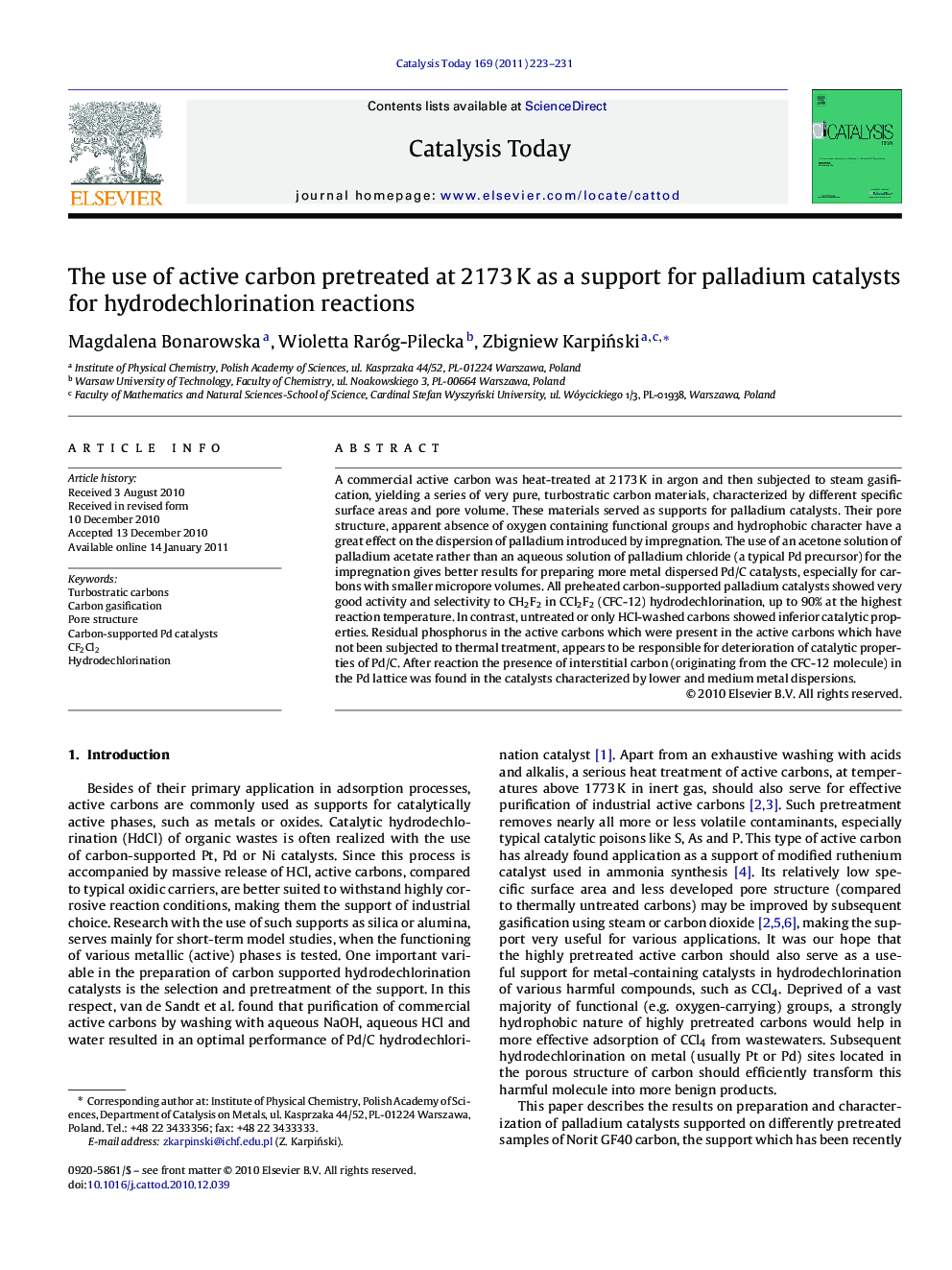| Article ID | Journal | Published Year | Pages | File Type |
|---|---|---|---|---|
| 56062 | Catalysis Today | 2011 | 9 Pages |
A commercial active carbon was heat-treated at 2173 K in argon and then subjected to steam gasification, yielding a series of very pure, turbostratic carbon materials, characterized by different specific surface areas and pore volume. These materials served as supports for palladium catalysts. Their pore structure, apparent absence of oxygen containing functional groups and hydrophobic character have a great effect on the dispersion of palladium introduced by impregnation. The use of an acetone solution of palladium acetate rather than an aqueous solution of palladium chloride (a typical Pd precursor) for the impregnation gives better results for preparing more metal dispersed Pd/C catalysts, especially for carbons with smaller micropore volumes. All preheated carbon-supported palladium catalysts showed very good activity and selectivity to CH2F2 in CCl2F2 (CFC-12) hydrodechlorination, up to 90% at the highest reaction temperature. In contrast, untreated or only HCl-washed carbons showed inferior catalytic properties. Residual phosphorus in the active carbons which were present in the active carbons which have not been subjected to thermal treatment, appears to be responsible for deterioration of catalytic properties of Pd/C. After reaction the presence of interstitial carbon (originating from the CFC-12 molecule) in the Pd lattice was found in the catalysts characterized by lower and medium metal dispersions.
